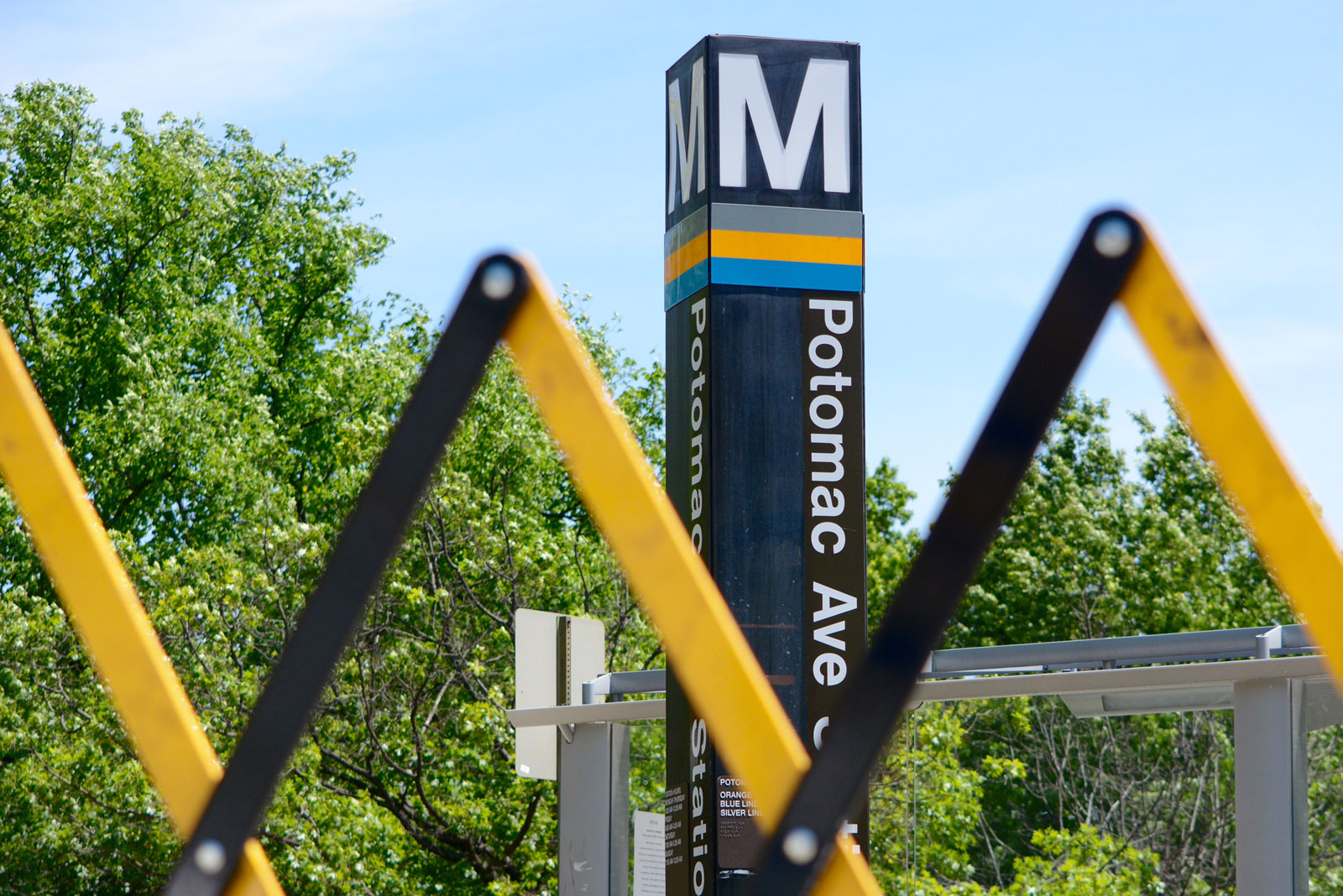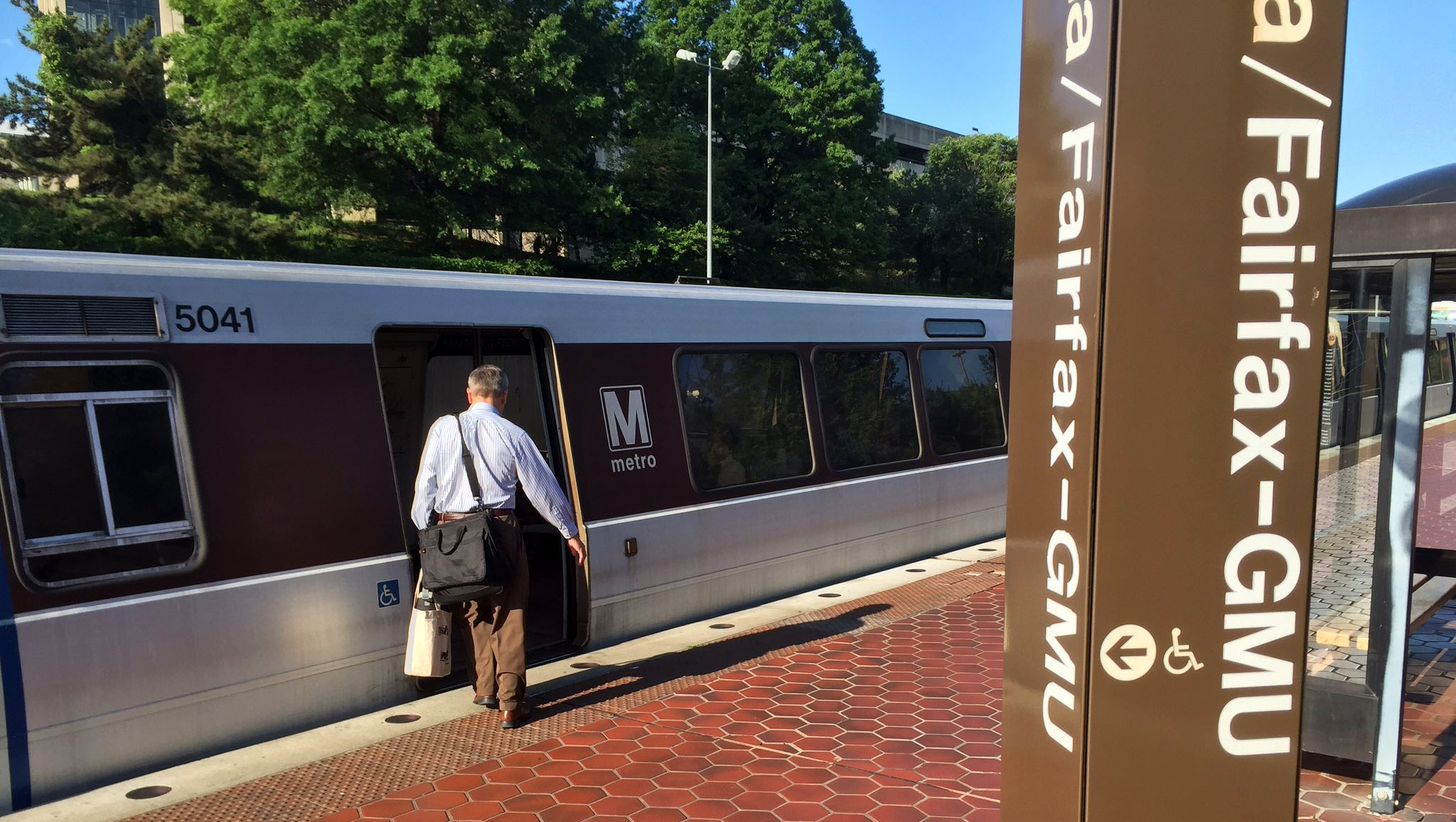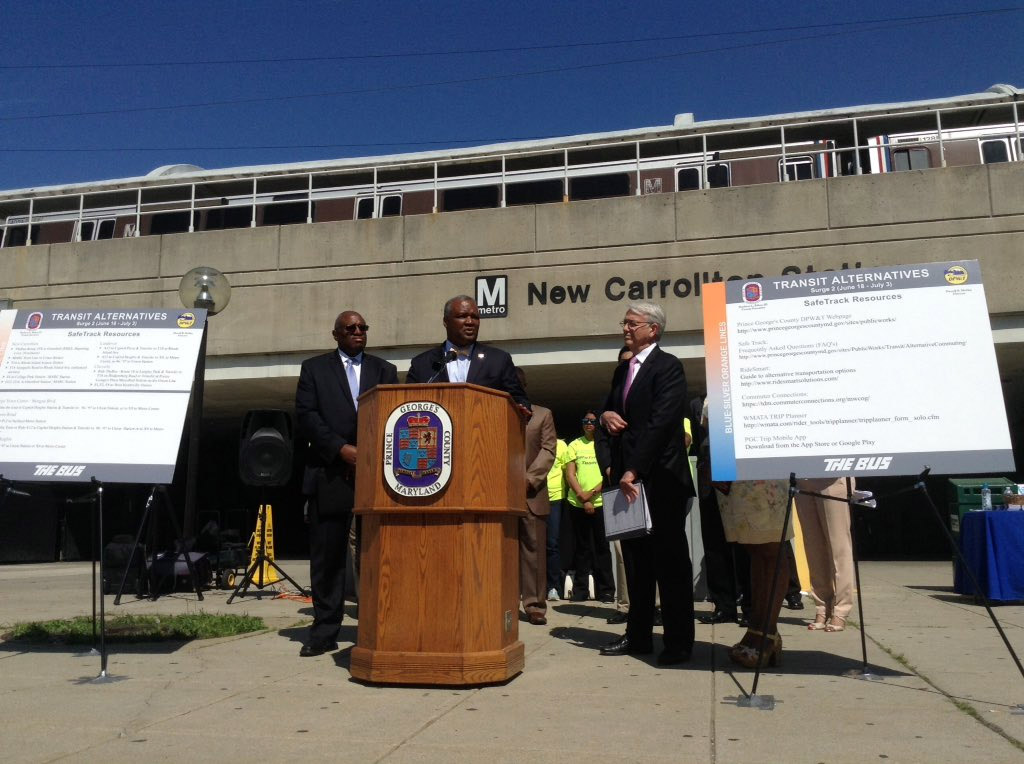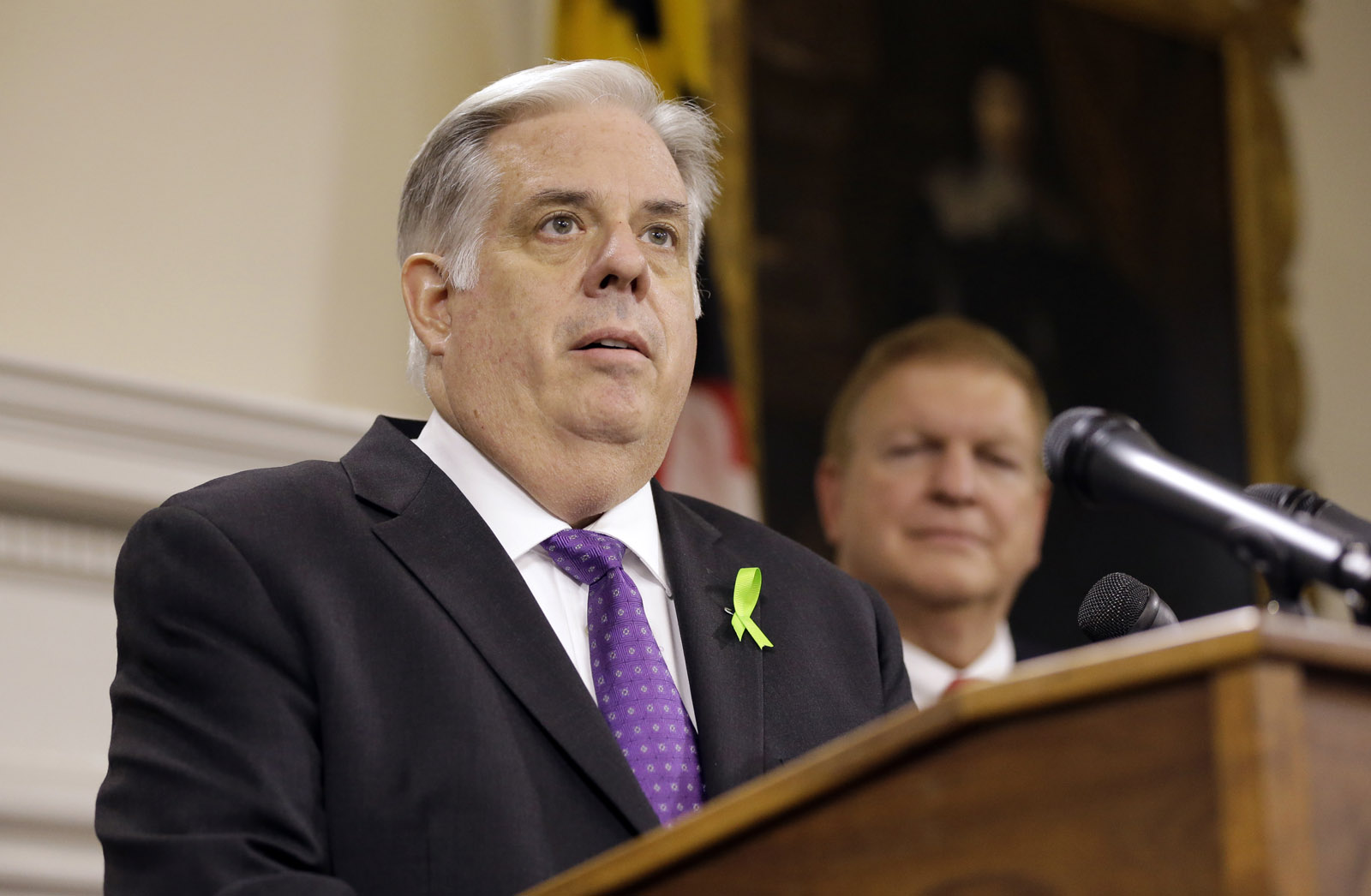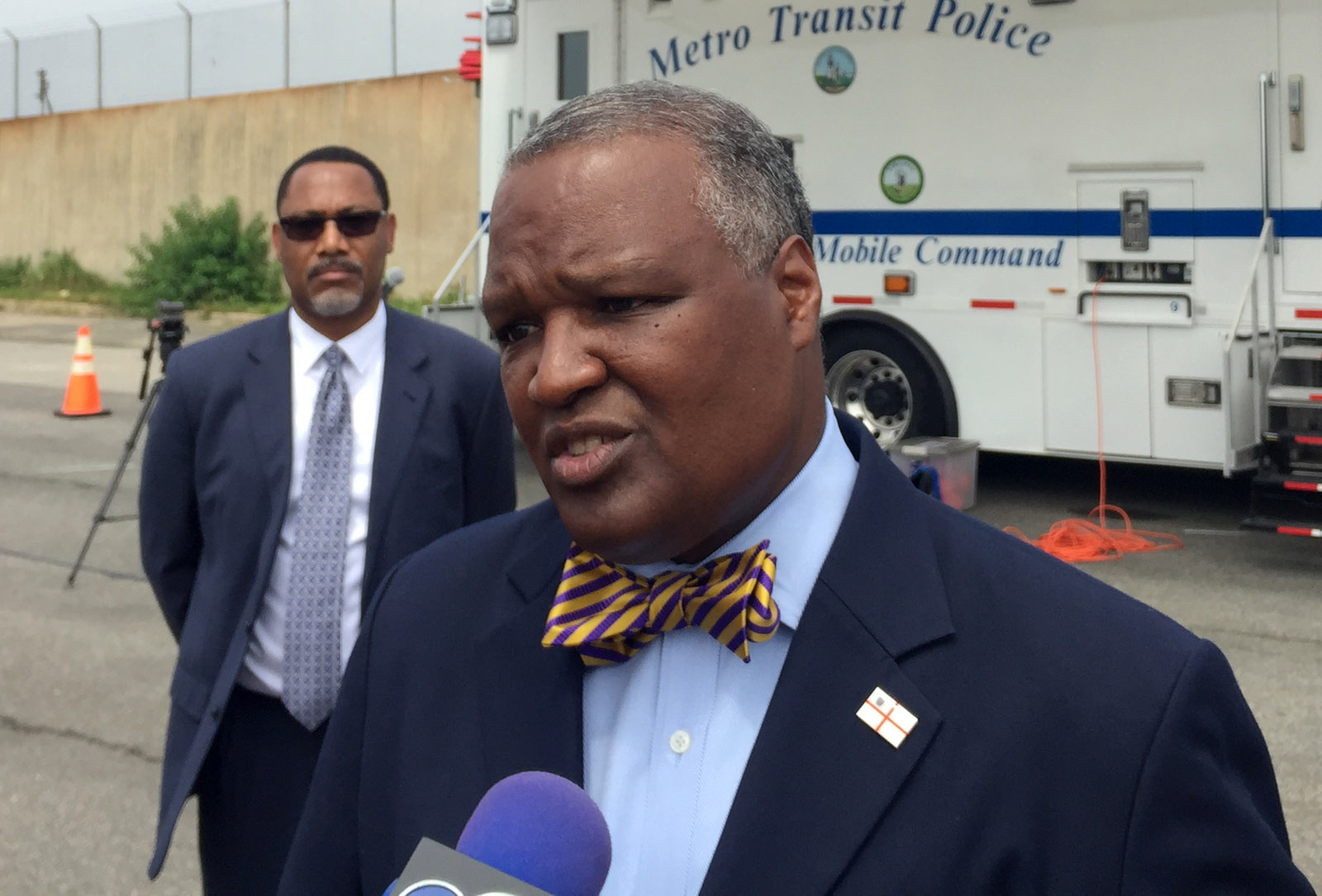
MD Transp Sec Pete Rahn MD Sen Anthony Muse and Governor @LarryHogan at announcement on MD RT 210 in PG County pic.twitter.com/2uc7GsuoiK
— Kate Ryan (@KateRyanWTOP) June 15, 2016
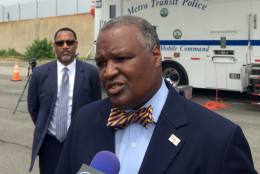
WASHINGTON — The state of Maryland is hanging Prince George’s County out to dry as the region prepares for a two-week Metro track shutdown, County Executive Rushern Baker said Thursday.
Baker said the state has not done enough to supplement the county-run bus system or the state-run MARC service ahead of the track repairs that will cut off Blue, Orange and Silver line service between D.C. and Prince George’s County beginning this weekend.
And he has yet to hear what specific actions the state could take to ease the effects of the Metro work.
Baker’s comments come a day after Gov. Larry Hogan criticized the Democrat in public remarks in Oxon Hill. The governor came to Prince George’s County to announce work on a new interchange on Route 210. But Baker said he was not invited.
The public spat highlights key differences in priorities between the state’s urban Democrats and Hogan, a Republican and former businessman from Anne Arundel County.
At the event, the governor touted more than 70 road projects planned in the county totaling $923 million.
“Well, Rushern was one of the guys who was standing in the way of our progress in all of these roads. But I’m sure he’s happy that we’re going to fix all of the problems,” Hogan said.
Baker and other local leaders supported a new law that will require the state to objectively score road and transit projects to ensure that the most beneficial projects are funded. Hogan, who campaigned on support for road projects over transit, vetoed the measure saying it would make it more difficult to complete projects and that it was unfairly weighted to urban areas, favoring transit over roads.
The General Assembly overrode Hogan’s veto and the law takes effect in July.
“That’s a state highway. I hope they talked about the money that we need from the state to fix 210 and make sure there’s not a bottleneck. This is my first time hearing about it,” Baker told WTOP.
“We’ve been waiting. We put it as our No. 1 project in the state for the last couple of years. We were disappointed in the last two years that we really had to fight for 210, Route 1, where we’re doing economic development,” Baker responded.
But when it comes to the ongoing Metro repairs, in Baker’s view, the state is failing Maryland commuters by not doing more to help them cope with 10 months of severely reduced subway service — the backbone of the region’s transportation network.
The second round of repairs will close the Blue and Silver lines between Eastern Market and Benning Road and the Orange line between Eastern Market and Minnesota Avenue.
“What we’ve asked for in the state is to look at alternatives with providing transportation so that we can get Marylanders to their jobs in the District of Columbia and to Northern Virginia and to Montgomery County,” Baker said.
“We’re limited in our budget; we’re dealing with a deficit as it is. That’s why we need the state to step in. This is like a snowstorm, it is an emergency and we need them to really step in and help us out,” Baker said Thursday.
Maryland Transportation Secretary Pete Rahn said Wednesday that the state has been working with local governments on “a number of activities” but did not elaborate on what those actions would be.
MARC plans to add some extra railcars to Camden Line trains during the two-week work zone, and Baker is joining regional leaders to encourage residents to telework, take buses, carpool or shift schedules to travel outside of the height of rush hour if possible.
Montgomery County has announced additional RideOn bus service during Red Line work later this summer and in the fall.
“Just come up with a plan. It could be commuter buses. It could be working with us, especially with the HOV, making sure that it is not being abused. It could be helping us on major highways to make sure we can get people coming in and out. There’s a number of things, but we need their participation in it,” Baker said.
Virginia’s Commonwealth Transportation Board Tuesday approved $1 million in funding for special bus service in Northern Virginia in response to Metro’s 10-month rehabilitation work that will significantly reduce service for riders throughout the region. Local agencies like Fairfax Connector and Alexandria’s DASH bus system will have to match that funding.
The state’s seeming inaction to help during Metro service reductions has touched a raw nerve. Local leaders are still smarting from Hogan’s decision to all but pull out of the Purple Line project. He required Prince George’s and Montgomery counties to pick up a larger portion of the cost of the 16-mile light rail project in order to keep the long-planned for rail project alive.
“We think it’s important enough where the residents of both counties stepped up. But I think that’s uncalled for. This is an economic development tool for the entire state. Every other governor, Republican or Democrat, has stepped up to the plate. This is the first time we’ve had to do it,” Baker said.
The Hogan administration has enthusiastically said the Purple Line is now moving full steam ahead, despite a lawsuit from opponents trying to slow or stop the project.
The federal government announced this week that an $875 million loan has been approved for the project and a $900 million grant is in the works. Construction is slated to begin later this year.
Ryan reported from Oxon Hill, Maryland.


